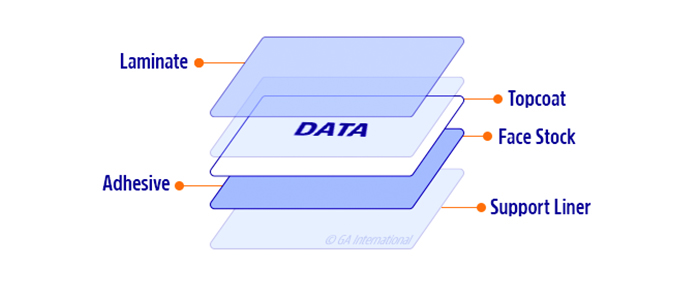
Sample identification systems are an integral part of all laboratory workflows. Optimized systems typically rely on either barcode and/or RFID labels; however, without the necessary adhesion of the label to its surface, these systems cannot readily function to track samples and inventory throughout workflows accurately. Here are several tips to ensure proper label adhesion, from label selection to sophisticated applicators and automated labelers, which can help ensure consistent identification of all tubes, vials, glassware, and other containers.
Select the right label
Choosing the right label for each individual application is the first and most important step to ensuring proper label adhesion. Label performance is based on the environmental conditions to which they are subjected. For example, general purpose labels do not adhere readily when exposed to harsh organic solvents or extreme temperatures. To optimize adherence in these conditions, chemical-resistant labels, cryogenic labels, and autoclave labels are available in addition to a myriad of other specialized labels for a host of different laboratory conditions and applications.
Consider temperature
Each type of specialty label is designed to adhere within a range of temperatures. For instance, NitroTAG® cryogenic labels can withstand temperatures ranging from -196°C to +110°C. However, the conditions in which the label initially adheres to its container are greatly affected by temperature as well. At extremely low temperatures, most labels will not adhere to plastic, glass, or even metal surfaces, especially where condensation or ice are present. For this reason, it is advised to use CryoSTUCK® labels. These labels stick to already frozen surfaces at temperatures as low as -80°C, so that tubes and vials recovered from deep-freeze and cryogenic conditions do not need to be thawed in order to label or re-label them.
Test using appropriate environmental conditions
When selecting labels for specific applications, it’s always worth ordering from an experienced manufacturer who can provide samples beforehand. This ensures that the labels work as intended, with optimal adhesion to their container throughout the entirety of the workflow. Ideally, it’s worth running the entire experimental protocol at least once using a limited number of tubes and labels to verify that adhesion remains optimal.
Ensure a clean surface
Often overlooked because most labels are kept relatively clean, it is worth verifying that the surface of your containers remains so as well. While dust should be kept to a minimum in any lab, “dirt” can also refer to unintended spills from chemicals such as buffers, glycerol, alcohol, and water. These can all greatly hinder the adhesive properties of labels; therefore, spills should be avoided as much as possible, and if unavoidable, chemical-resistant labels should be considered. Regarding the label surface, using the patent-pending SimPEEL™ helps ensure the label adhesive remains free of contaminants that may be transferred from soiled gloves, thanks to its innovative adhesive-free tab design.
Employ label applicators when possible
While label applicators may not directly affect the adhesive properties of labels, accessories like the patented PikaTAG® can enhance label placement for dot labels for the tops of conical tubes and vials. This ensures accurate label placement, preventing any part of the label from being placed outside the surface of the container and providing consistent adherence of the label to its surface. Automated applicators are even more effective at efficiently and consistently applying labels to containers, providing a valuable tool for labs with a high throughput.
LabTAG by GA International is a leading manufacturer of high-performance specialty labels and a supplier of identification solutions used in research and medical labs as well as healthcare institutions.